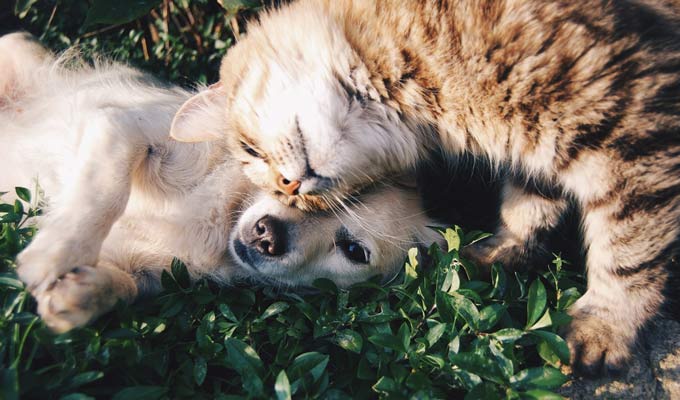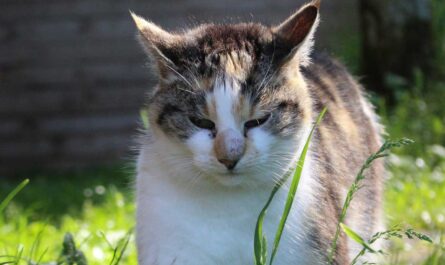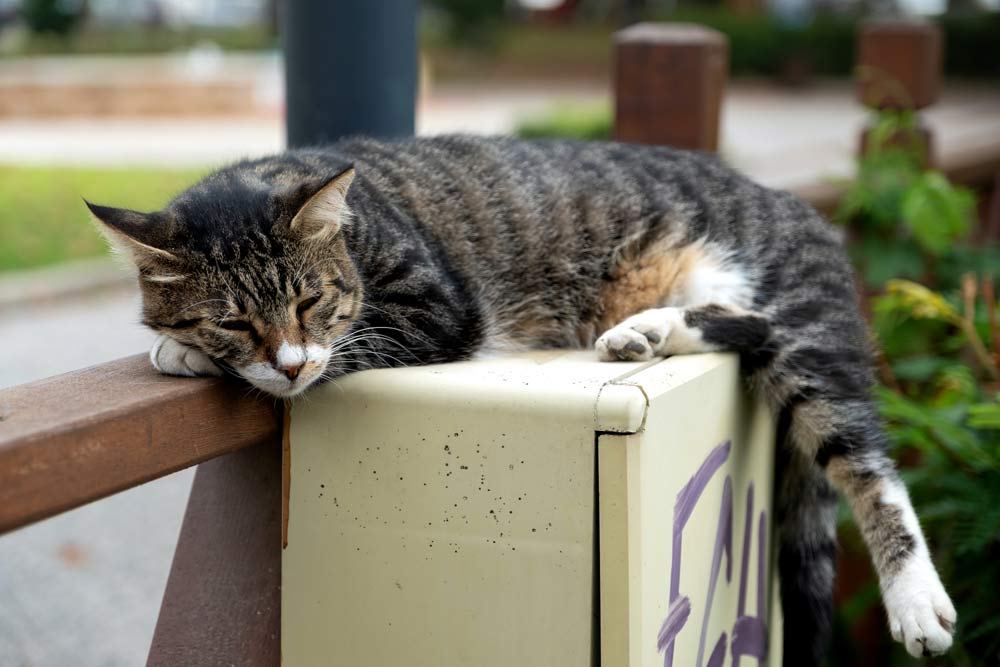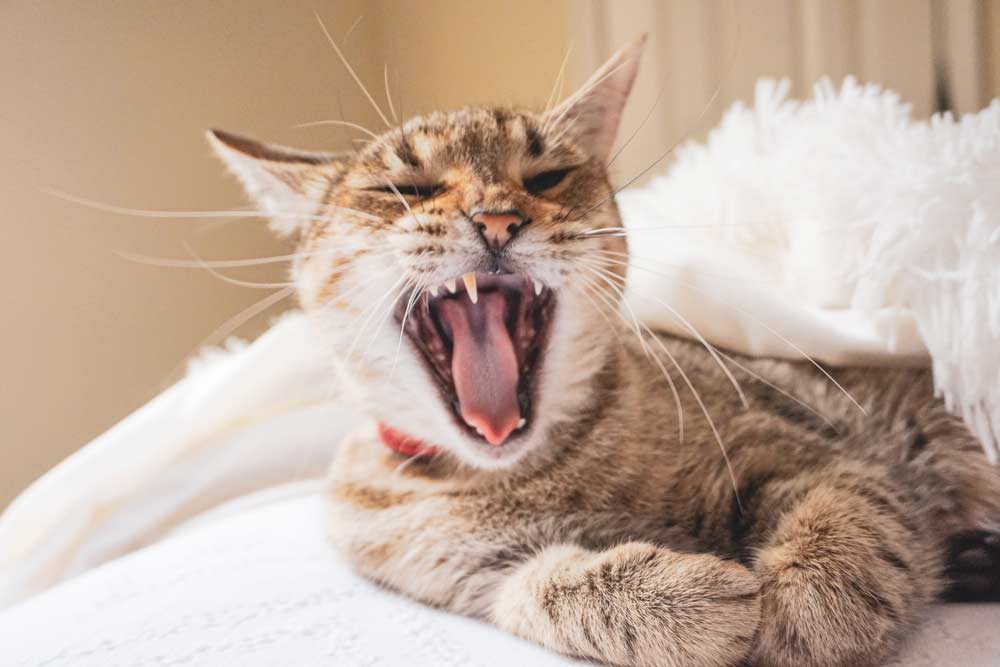Why do cats knead and bite blankets often? Cats knead and bite blankets for a myriad of reasons deeply ingrained in their instincts and emotional needs. From seeking comfort and security to expressing playful energy or coping with stress, these behaviors offer a window into the complex world of feline behavior. By observing and understanding these actions, cat owners can forge stronger bonds with their pets and provide them with environments conducive to their physical and emotional well-being. Embracing the quirks and idiosyncrasies of our feline friends enriches the human-animal bond, fostering mutual understanding and companionship.
Why Do My Cats Knead and Bite Blankets? 12 Possibilities
Cats exhibit peculiar behaviors that often puzzle their human companions. Among these behaviors, kneading and biting blankets rank among the most intriguing. This essay delves into the various reasons behind these actions, shedding light on the feline psyche and providing insights for cat owners seeking to understand their pets better.
1. Instinctual Comfort Seeking
At the core of this behavior lies a primal instinct deeply ingrained in feline ancestry. When kittens nurse from their mother, they instinctively engage in rhythmic kneading motions to stimulate milk flow. This soothing action becomes deeply associated with comfort and security, akin to a gentle lullaby for an infant. As cats mature into adulthood, this instinct persists, often manifesting in kneading behaviors directed towards soft surfaces such as blankets. The rhythmic motion of kneading provides cats with a profound sense of familiarity and contentment, evoking memories of the warmth and security experienced during infancy.
Inherited Instincts: Kneading behavior stems from primal instincts developed during kittenhood, where rhythmic motions were employed to stimulate milk flow during nursing. This ingrained behavior persists into adulthood, serving as a source of comfort and security for cats throughout their lives.
Soothing Ritual: For cats, the act of kneading is akin to a soothing ritual, evoking feelings of comfort and contentment reminiscent of their earliest experiences with maternal care. This rhythmic motion provides cats with a sense of familiarity and warmth, fostering a profound sense of well-being.
2. Scent Marking and Territoriality
However, beyond mere comfort, kneading and biting blankets serve a dual purpose as a means of scent marking and territorial assertion for cats. Felines possess scent glands located in the pads of their paws, and as they knead, they release pheromones onto the surface they are manipulating. Through this scent marking, cats communicate ownership and familiarity, effectively creating a comforting environment within their chosen space. Additionally, the act of biting blankets may further reinforce this territorial behavior, as cats leave behind traces of their scent through saliva, effectively claiming the object as their own.
Scent Communication: Kneading and biting blankets allow cats to communicate ownership and familiarity through scent marking. By releasing pheromones from the pads of their paws and saliva, cats establish a comforting environment within their territory, reinforcing their sense of security.
Territorial Assertion: Through kneading and biting behaviors, cats assert their territorial boundaries, marking objects such as blankets with their scent to signify ownership and familiarity. This instinctual behavior serves to create a sense of security and comfort within their living space, ensuring a comforting environment for feline occupants.
3. Stress Relief and Self-Soothing
In moments of stress or anxiety, cats often turn to kneading and biting blankets as a form of self-soothing and stress relief. Similar to how humans may find solace in activities like knitting or squeezing stress balls, cats derive comfort from the repetitive motion and tactile sensation of manipulating soft fabrics. The rhythmic action of kneading helps release tension and promotes relaxation, serving as a coping mechanism in response to environmental stressors or changes in routine. Observing a cat engaged in this behavior can offer insights into their emotional state and provide cues for addressing any underlying sources of anxiety or discomfort.
Coping Mechanism: Kneading and biting blankets serve as a coping mechanism for cats, helping them manage stress and anxiety by providing a comforting outlet for tension release. This repetitive motion and tactile sensation offer a sense of security and reassurance, promoting relaxation and emotional well-being.
Insight into Emotional State: Observing a cat engaged in kneading and biting behaviors can provide valuable insights into their emotional state. By paying attention to these cues, caregivers can identify signs of stress or anxiety and take proactive steps to address underlying sources of discomfort, fostering a supportive and nurturing environment for their feline companions.
4. Play and Predatory Instincts
However, in some instances, the act of kneading and biting blankets may also be intertwined with play and predatory instincts. Cats are natural hunters, and their interactions with objects often mirror the behaviors associated with hunting and catching prey. Blankets, with their pliable texture and malleability, present an irresistible target for cats to stalk, pounce on, and “kill” through biting and kneading. This playful behavior not only provides cats with mental stimulation and physical exercise but also allows them to refine their hunting skills in a safe and controlled environment.
Playful Exploration: For cats, kneading and biting blankets can be a playful form of exploration and interaction with their environment. By engaging in these behaviors, cats satisfy their natural curiosity and desire for mental stimulation, enriching their lives and fostering a sense of engagement with their surroundings.
Honing Hunting Skills: Through playful interactions with blankets, cats hone their hunting skills and instincts, practicing essential behaviors such as stalking, pouncing, and biting. This playful mimicry of hunting behaviors not only provides cats with physical exercise but also allows them to satisfy their innate predatory instincts in a safe and stimulating manner.
5. Comfort in Familiarity
The act of kneading and biting blankets embodies a cat’s innate longing for comfort and familiarity. Blankets, with their soft texture and enveloping warmth, offer an inviting surface for cats to engage in behaviors reminiscent of their early days of nursing. Through the rhythmic motion of kneading against the plush fabric, cats evoke feelings of security and contentment, harkening back to a time of maternal care and nurturing. In this profound sense, blankets transcend their role as mere objects; they become symbolic representations of comfort and reassurance in a cat’s world.
Symbolism of Security: Blankets symbolize a sanctuary of warmth and security for cats, reminiscent of the nurturing embrace experienced during their formative stages of development. The act of kneading against these familiar surfaces serves as a comforting ritual, imbued with memories of maternal care and emotional nourishment.
Nostalgia and Emotional Connection: Engaging in kneading and biting behaviors on blankets fosters a sense of nostalgia and emotional connection for cats, evoking memories of the soothing comfort provided by their mothers during infancy. This profound bond with blankets transcends the physical realm, offering cats a source of solace and reassurance in times of need.

6. Sensory Stimulation
Moreover, the tactile experience of kneading and biting blankets offers cats a rich form of sensory stimulation that is both pleasurable and engaging. The texture of the fabric against their paws and teeth provides sensory feedback, activating neural pathways associated with pleasure and satisfaction. Similar to how humans derive pleasure from tactile experiences like running their fingers through soft fabric or popping bubble wrap, cats revel in the sensory delights of manipulating blankets through kneading and biting. This sensory engagement not only fulfills a physical need but also contributes to the overall well-being and happiness of the cat.
Pleasurable Tactile Experience: The tactile sensation of kneading and biting blankets offers cats a pleasurable form of sensory stimulation, activating neural pathways associated with pleasure and satisfaction. The texture of the fabric against their paws and teeth provides a soothing and engaging experience, enhancing their overall sense of well-being.
Enhanced Emotional Wellness: Engaging in kneading and biting behaviors on blankets contributes to the emotional wellness of cats by providing sensory enrichment and stimulation. This sensory engagement promotes feelings of contentment and happiness, enriching the lives of cats and fostering a sense of fulfillment in their daily experiences.
7. Social Bonding and Affection
The act of kneading and biting blankets extends beyond solitary comfort-seeking behaviors; it serves as a powerful means of social bonding and affection expression between cats and their human companions. In multi-cat households, cats may engage in communal kneading sessions, taking turns to knead and groom one another as a form of social grooming and bonding. Similarly, when a cat kneads and bites a blanket in the presence of their human caregiver, it can be interpreted as a display of trust, affection, and a desire for closeness. By associating the scent and sensation of their owner’s belongings with feelings of security and love, cats strengthen their bond with their human counterparts.
Communal Bonding Rituals: In multi-cat households, communal kneading sessions foster social bonding and cohesion among feline companions. Cats engage in reciprocal grooming and kneading behaviors, reinforcing their social bonds and establishing a sense of unity within the group.
Expression of Trust and Affection: When a cat kneads and bites a blanket in the presence of their human caregiver, it serves as a tangible expression of trust, affection, and a desire for closeness. By associating the scent and sensation of their owner’s belongings with feelings of security and love, cats deepen their bond with their human counterparts, fostering a sense of mutual trust and companionship.
8. Environmental Enrichment
Furthermore, providing cats with opportunities to engage in kneading and biting blankets contributes to their environmental enrichment and mental stimulation. Despite their modern lifestyles, domestic cats retain many of the instincts and behaviors of their wild ancestors. Allowing them to engage in natural behaviors like kneading and biting helps satisfy their innate need for mental and physical stimulation, preventing boredom and promoting overall well-being. By incorporating blankets and other soft furnishings into their environment, cat owners can create a stimulating and enriching space that encourages natural behaviors and enhances the quality of life for their feline companions.
Satisfying Natural Instincts: Kneading and biting blankets provide cats with an outlet for expressing natural behaviors inherited from their wild ancestors. By engaging in these activities, cats satisfy their innate need for mental and physical stimulation, promoting overall well-being and fulfillment.
Promoting Mental Stimulation: Engaging in kneading and biting behaviors on blankets stimulates cats’ minds and senses, preventing boredom and enriching their daily experiences. By providing opportunities for natural behaviors in their environment, cat owners promote mental and emotional well-being in their feline companions, enhancing their quality of life.
9. Development of Motor Skills
Kneading and biting blankets play a crucial role in the development and maintenance of a cat’s motor skills. The repetitive motion involved in kneading requires coordination between the muscles in a cat’s forelimbs and paws, promoting dexterity and agility. This activity is particularly beneficial during the early stages of kittenhood when motor skills are still developing. Additionally, kneading allows adult cats to keep their motor skills sharp and maintain physical abilities as they age. Similarly, biting blankets engages the muscles in a cat’s jaw, promoting jaw strength and coordination. By regularly engaging in these behaviors, cats can enhance their motor skills and overall physical prowess.
Coordination and Dexterity: Kneading blankets requires coordination between a cat’s forelimbs and paws, promoting dexterity and agility from an early age.
Maintenance of Physical Abilities: Engaging in kneading and biting activities helps adult cats maintain their motor skills and physical abilities, contributing to their overall health and well-being.
10. Exploration and Curiosity
Cats are inherently curious creatures, and their inclination to knead and bite blankets often stems from a desire to explore and interact with their environment. Blankets, with their soft texture and pliable structure, provide cats with a versatile canvas for exploration and manipulation. Through kneading and biting, cats can investigate different textures, scents, and sensations, satisfying their innate curiosity and providing mental stimulation. This exploration not only fulfills a cat’s need for sensory enrichment but also allows them to engage with their surroundings in a meaningful and interactive way. Providing cats with opportunities for exploration and discovery can enhance their overall well-being and foster a sense of fulfillment.
Sensory Enrichment: Kneading and biting blankets allow cats to engage their senses, exploring different textures and scents for mental stimulation and enrichment.
Interactive Engagement: Providing cats with opportunities for exploration and discovery through kneading and biting activities promotes interactive engagement with their environment, contributing to their overall well-being and satisfaction. How AI, ChatGPT maximizes earnings of many people in minutes
11. Expression of Contentment and Happiness
Kneading and biting blankets are often accompanied by signs of contentment and happiness in cats, such as purring, relaxed body language, and half-closed eyes. These behaviors signify that cats are experiencing pleasure and satisfaction, as blankets represent sources of comfort, security, and joy. By engaging in these activities, cats express contentment with their surroundings and demonstrate happiness in their environment. Understanding these subtle cues allows cat owners to gauge their pet’s emotional state and ensure they feel safe, secure, and content at home.
Indicators of Happiness: Purring, relaxed body language, and half-closed eyes accompany kneading and biting behaviors, indicating contentment and happiness in cats.
Sources of Comfort: Blankets serve as more than physical objects for manipulation; they represent sources of comfort and security for cats, eliciting feelings of joy and satisfaction.
12. Bonding Through Scent
Kneading and biting blankets facilitate bonding through scent exchange between cats and their environment. Cats use scent as a means of communication and social interaction, and by leaving traces of their scent on blankets, they create a familiar and comforting environment that reinforces their sense of belonging and security. Additionally, when cats knead and bite blankets carrying their owner’s scent, it strengthens the bond between them by associating their owner’s scent with feelings of safety and affection. This scent-based communication is crucial for establishing and maintaining social bonds within the feline community and between cats and their human companions. Cat accessories on Amazon
Scent Exchange: Kneading and biting blankets allow cats to leave traces of their scent, creating a familiar and comforting environment that reinforces their sense of belonging and security.
Bond Strengthening: When cats engage with blankets carrying their owner’s scent, it strengthens the bond between them, associating their owner’s scent with feelings of safety and affection.
Other Interesting Articles
- How to Help Your Cat Overcome Fears in 13 Strategic Steps
- 13 Easy Tricks To Teach Your Cat: Basic Feline Training Guide
- How To Train Your Cat: 15 Easy Steps To Teach New Things
- Why Do Cats Have Tails? 4 Fun Facts You Didn’t Know
- 16 Simple Ways To Establish A Stronger Bond With Your Cat
- How To Train Your Cat/Kitten To Sit: Steps, Command, Guide
- Cat Giving Birth: From Your Feline Pregnancy to Kitten Care
- Fading Kitten Syndrome: Age, Causes, Symptoms, Treatment
- Kitten Bottle Feeding: Chart, Tips, Recipe, Challenges, Guide
- Cat Pregnancy: Timeline, Signs, Labor, Behavior, Stages
- 16 Silent Killers of Cats Every Pet Owner Must Be Aware Of
- Do Mother Cats Discipline Their Kittens? A Guide To Owners
- How To Take Care of A Kitten 6 Weeks Old: A 7-Step Guide
- How To Tell If Your Cat is Trying to Hurt You: A To-Do Guide
- How To Tell If Your Cat Has Tapeworms: What You Can Do
- How To Tell If My Cat is in Pain After Neutering: What To Do
- How To Get A Cat To Trust You Fast: Signs, Tips, Techniques
- 12 Signs Your Cat is a Boy: Tips To Distinguish A Male Cat
- Single Kitten Syndrome: Age, Signs, Symptoms, Treatments
- How To Tell If Your Cat Can’t See Well: What You Can Do



